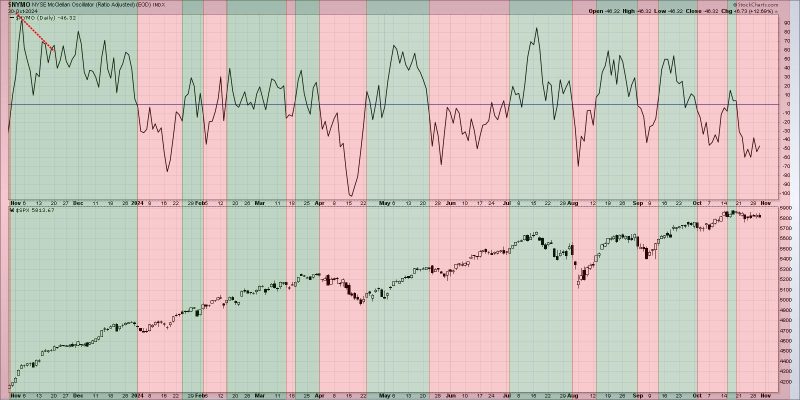Breadth divergences have long been recognized as key indicators in the world of finance, often signaling shifts in market sentiment and potential turning points in bull markets. So, it is essential to closely observe the implications of such divergences and their possible outcomes.
Divergences in market breadth are often considered warning signs or indicators of potential shifts in market direction. These divergences occur when the breadth of the market, referring to the number of stocks participating in the trend, does not match the trend itself. In bullish markets, for example, if the market is hitting new highs but the number of stocks making new highs is declining, this can be seen as a warning sign that the market’s strength may be waning.
One key aspect of breadth divergences is the concept of confirmation. A healthy market trend should ideally be supported by a broad participation of stocks. When a market index is rising but fewer and fewer stocks are contributing to that rise, it suggests that the uptrend is losing steam and may be unsustainable in the long run. This lack of confirmation can lead to a loss of confidence among investors and potentially trigger a market correction.
Moreover, breadth divergences can also help identify strong sectors or weak areas within the market. By analyzing the performance of various sectors or industries in relation to the overall market trend, investors can gain insights into where the strengths and weaknesses lie. This can be invaluable in making informed investment decisions and positioning portfolios to weather potential market shifts.
In essence, breadth divergences are crucial in providing a holistic view of market dynamics and sentiment. They can help investors anticipate potential market turns, identify underlying weaknesses in the market trend, and highlight opportunities for portfolio adjustments. By paying close attention to breadth indicators and understanding their implications, investors can navigate the ever-changing market landscape with greater confidence and agility.

